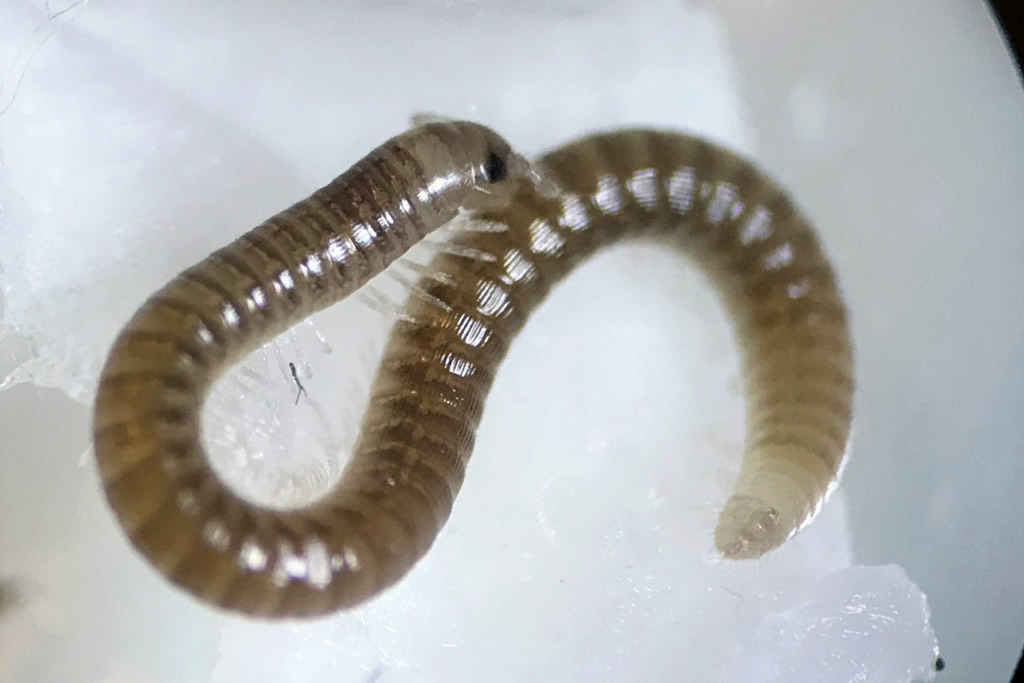Leptoiulus kervillei (Brölemann, 1897)
Status:
- GB IUCN status: Least Concern
- GB rarity status: Nationally Scarce
ID Difficulty
Identification
This large dark millipede with a pointed projecting tail (telson) may be confused with several morphologically similar species, including Julus scandinavius, Ophyiulus pilosus or even Tachypodoiulus niger.
Identification is best undertaken by examination of male a specimen in which the first pair of legs are modified into swollen bluntly pointed hooks (as Leptoiulus belgicus) and the second pair with sheath-like projections around their bases (see image right, and absent in L. belgicus).
Distribution
Although most frequent in Devon and Cornwall this species has been recorded from several counties south of a line from the Severn to the Thames estuary and from south Wales. Blower (1985) refers to a record from Bedford but no details of this have been submitted to the recording scheme.
Leptoiulus kervillei has an Atlantic distribution, occurring through northern and western France and reaching its northern limit in the Low Countries (Kime, 1999).
Habitat
Kime (2004) describes it as a common woodland species in the milder parts of Belgium. He associates it with base-rich soils, high in silt content. Analysis of the recording scheme habitat data shows no strong relationships with any of the habitats or environmental factors considered. However, there is some evidence it shows a preference for loamy, non-calcareous soils in coastal habitats. As with L. belgicus, coastal areas probably provide the warm conditions favoured by this millipede at the northern limits of its range in southern England. Kime and Wauthy (1984) found that this species preferred areas in Belgium with the highest average temperatures and the mildest winters. There is no obvious explanation for the apparent contradiction with the Belgian data on the millipede’s preference for soil acidity levels.
Phenology
It is likely that the life history is similar to that of Julus scandinavius (Blower, 1985). Thus breeding would occur in the spring. Both sexes then die so few adults should be expected during the summer months. Adults have been recorded from January to July but the number of records involved is small.
This updated species account is based on Lee (2006).
Links
MilliBase - Global catalogue of Millipedes: https://millibase.org/aphia.php?p=taxdetails&id=945293




